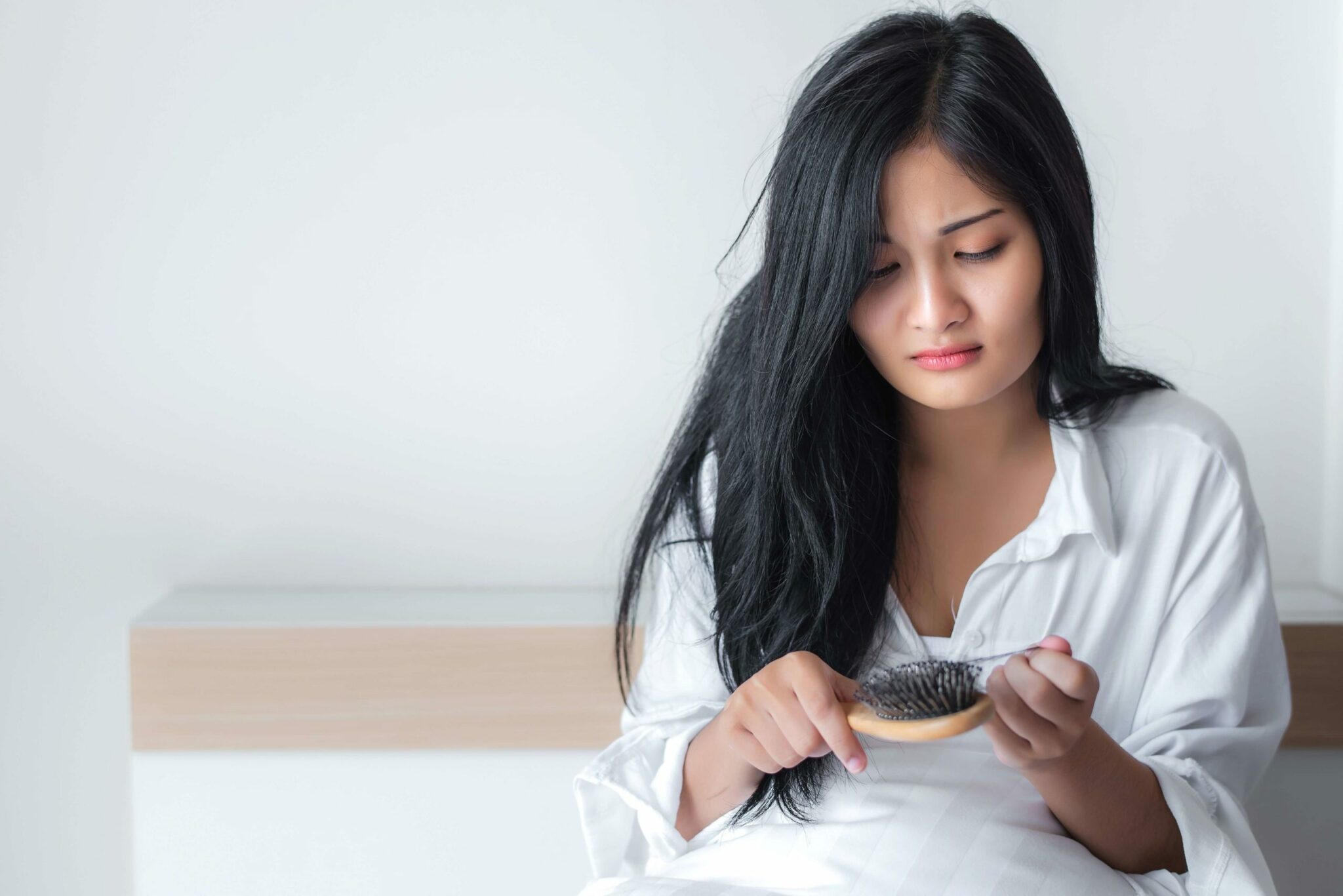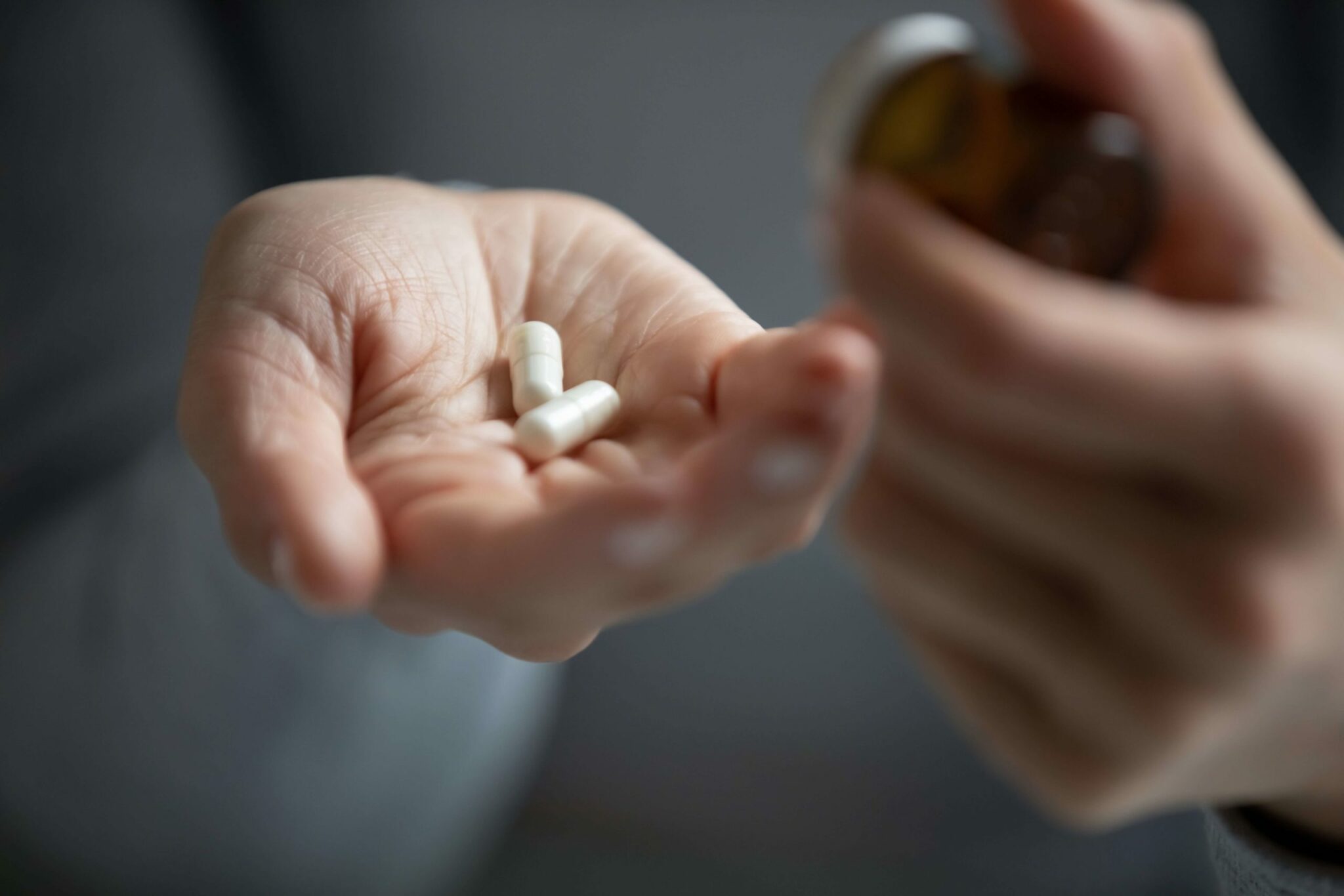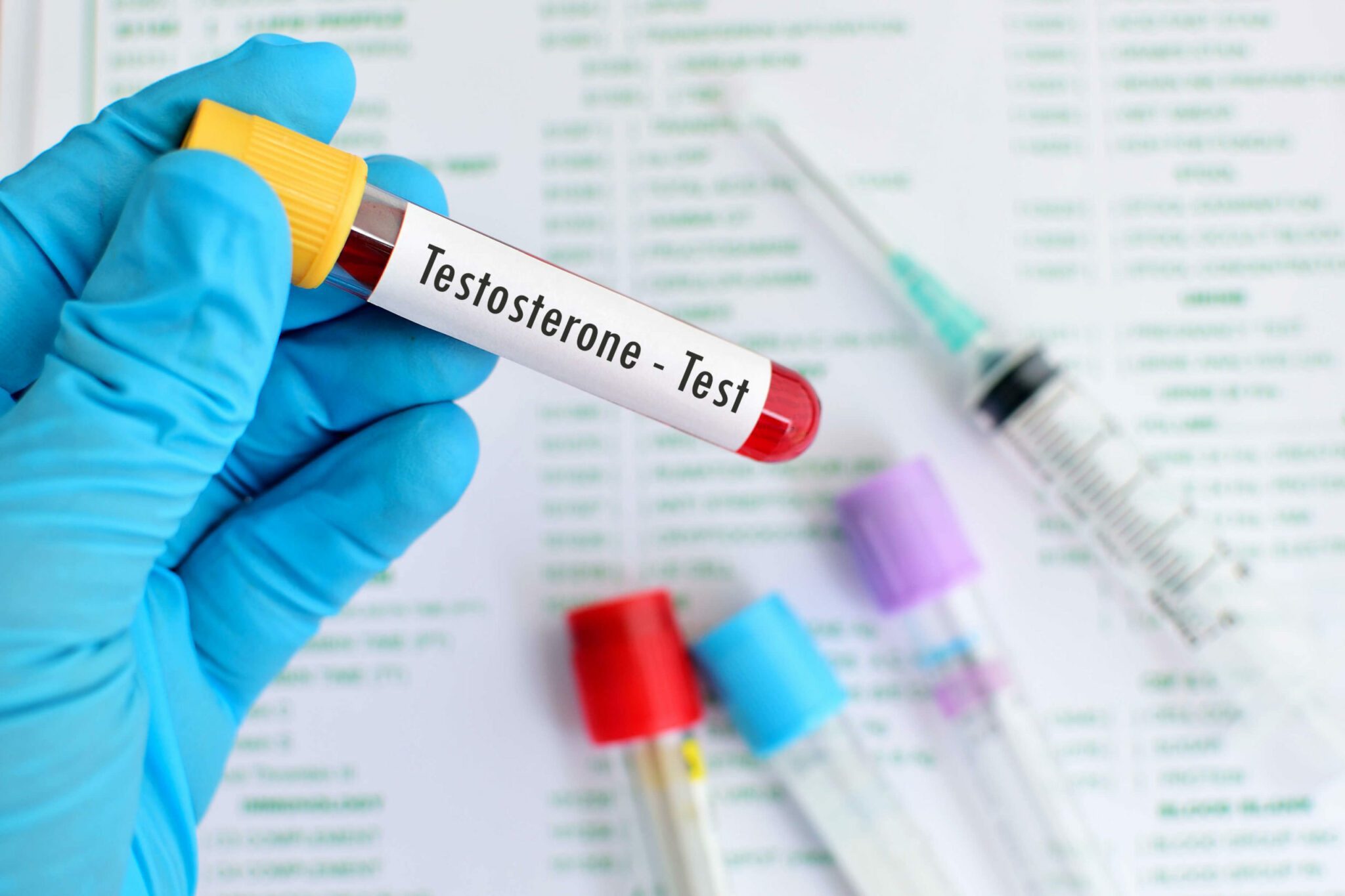Coping With PCOS Hair Loss


- Hair loss (and excessive hair growth) results from having high level of male hormones (androgens).
- High levels of androgens can be caused by PCOS.
- PCOS hair loss follows male-pattern balding, with thinning across the top and front of the head.
- PCOS hair loss treatment is not often effective through medication but can be managed through lifestyle changes such as losing weight to help restore normal ovulation.
Hyperandrogenism (an excess of androgens) is one of the most common symptoms of Polycystic Ovary Syndrome (PCOS), affecting between 60% and 80% of women who have the condition. Androgens are the male sex hormones and, whilst all women need some of these hormones, if levels get too high, certain masculine traits can appear. These include hirsutism (facial hair), acne and alopecia (hair loss).
How common is PCOS-induced hair loss?
There is limited data on the prevalence of alopecia in women with PCOS, but it is thought to be less common than hirsutism, which affects 65-75% of women with PCOS. One study found that only 4% of women diagnosed with the condition reported scalp hair loss and although other studies suggest the prevalence is higher, many acknowledge that those at greatest risk also have a familial predisposition.
What does PCOS-induced hair loss look like?
PCOS-induced hair loss normally resembles male-pattern baldness as both are driven by androgens. The hair will usually thin across the front and top of the scalp and give the appearance of a receding hairline.
This is in contrast to normal female hair loss, which typically occurs with increasing age and is more of a general thinning across the entire scalp.
How to manage hair loss?
The symptoms of PCOS can be managed, usually through making lifestyle adjustments, such as losing weight and eating a more healthy diet. Many women with PCOS fail to ovulate regularly, disrupting the balance of oestrogen and progesterone. These hormones do far more than just regulate the menstrual cycle and one of the additional roles of oestrogen may be in supporting the growth of healthy hair. Taking steps to restore ovulation, ideally via lifestyle changes, may well improve a multitude of other interrelated symptoms, including improving the appearance and health of your hair. Tracking ovulation and your menstrual cycle will help you understand your symptoms better. Download the Nabta App to explore how to track your period.
Managing PCOS hair loss is as much to do with handling the psychological impact as the physical symptoms. Excessive hair loss can result in a lack of self-confidence and low self-esteem. It can be an emotionally stressful condition, affecting quality of life and if you find you are becoming overwhelmed and depressed you should reach out for help and support. Maintain contact with your doctor and talk to your family and friends about how you are feeling.
The importance of a healthy diet
Unfortunately, hair regrowth takes time, so even with the implementation of lifestyle changes, it might be months before any visible improvement is seen. One way of ensuring that the remaining hair is in good condition and new hair is healthy and strong is to follow a healthy diet.
Foods that are rich in protein and iron are recommended because hair requires both of these for growth. This can include chicken, fish, dairy and eggs for protein; and red meat, lentils and spinach for iron.
It is also worth incorporating additional zinc into your diet; zinc promotes ovulation, blocks androgens and stimulates hair growth. Food rich in zinc includes fortified cereals, wholegrains, legumes and eggs.
Are there other options for improving hair growth?
There is little to no evidence that medication is effective at enhancing hair growth. Hair loss treatment is often not proven to work. A drug called Finasteride does have some beneficial effects in males, but results with females are negligible, it should also be avoided during pregnancy.
Recent work has suggested that low-level laser therapy might promote hair growth, although this work is in the early stages.
Unfortunately for those affected, even after making all the right lifestyle changes, time and patience are paramount to making a full recovery.
Nabta is reshaping women’s healthcare. We support women with their personal health journeys, from everyday wellbeing to the uniquely female experiences of fertility, pregnancy, and menopause.
Get in touch if you have any questions about this article or any aspect of women’s health. We’re here for you.
Sources:
- Azziz, R., et al. “Androgen Excess in Women: Experience with Over 1000 Consecutive Patients.” The Journal of Clinical Endocrinology & Metabolism, vol. 89, no. 2, Feb. 2004, pp. 453–462., doi:10.1210/jc.2003-031122.
- Azziz, Ricardo, et al. “The Androgen Excess and PCOS Society Criteria for the Polycystic Ovary Syndrome: the Complete Task Force Report.” Fertility and Sterility, vol. 91, no. 2, Feb. 2009, pp. 456–488., doi:10.1016/j.fertnstert.2008.06.035.
- Friedman, S, and P Schnoor. “Novel Approach to Treating Androgenetic Alopecia in Females With Photobiomodulation (Low-Level Laser Therapy).” Dermatologic Surgery, vol. 43, no. 6, June 2017, pp. 856–867., doi:10.1097/DSS.0000000000001114.
- Ohnemus, Ulrich, et al. “The Hair Follicle as an Estrogen Target and Source.” Endocrine Reviews, vol. 27, no. 6, 28 Oct. 2006, pp. 677–706., doi:10.1210/er.2006-0020.
- van Zuuren, E J, et al. “Interventions for Female Pattern Hair Loss.” The Cochrane Database of Systematic Reviews , no. 5, 26 May 2016, p. CD007628., doi:10.1002/14651858.CD007628.pub4.












































